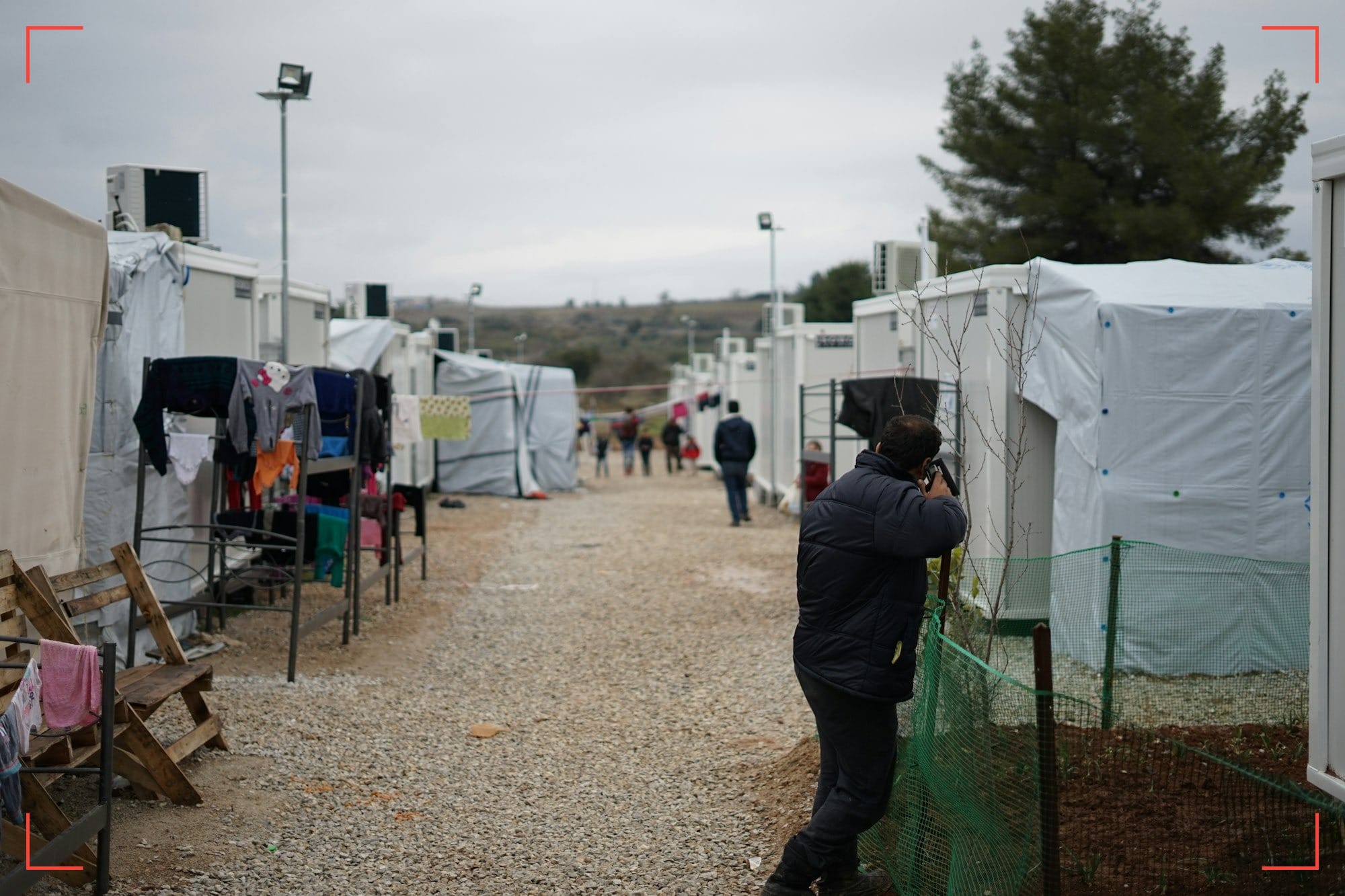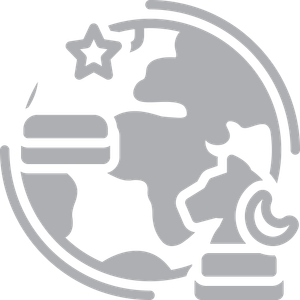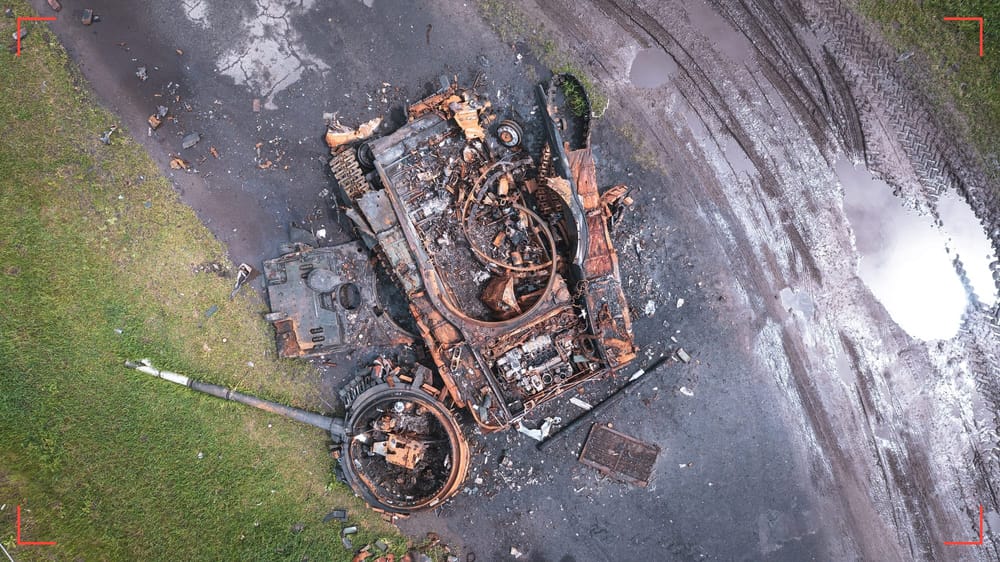European Defense: Humanitarian and Development Assistance SpecialREPORT
European defense and its impact on humanitarian and development assistance | APR 2025

Report Details
Initial Publish Date
Last Updated: 11 APR 2025
Report Focus Location: Europe
Authors: ATG, MA
Contributors: GSAT
GSAT Lead: MF
RileySENTINEL provides timely intelligence and in-depth analysis for complex environments. Our global team blends international reach with local expertise, offering unique insights to navigate challenging operations. For custom insights or urgent consultations, contact us here.
Key Points
- Rising tensions, particularly triggered by the war in Ukraine, have led to a significant increase in European defense spending.
- While several frontline states have exceeded NATO’s 2% GDP defense spending target, many European countries still fall short.
- The EU has adopted a strategic vision aiming to strengthen its security and defense posture by 2030. The ReArm Europe initiative seeks to mobilize up to €800 billion by 2029 to support joint procurement and reduce reliance on third countries.
- The war in Ukraine has exposed deficiencies in the European defense industry, particularly in the production of military equipment. Fiscal constraints, public debt, and political resistance in some EU member states may challenge the sustainability of increased defense spending.
- Several European countries have announced cuts in their aid budgets. More are likely to follow as the geopolitical situation worsens (Russian threats, economic development).
- As Europe focuses on security and defense, the tight definition of those terms does not include foreign aid. At the same time, the aid budget includes funding earmarked for migration and refugee support rather than humanitarian and development assistance.
- The aid system's reliance on a few mainly Western donors is being highlighted as the biggest challenge for aid agencies.
- Similar to China and Russia, Europe is also increasingly perceiving aid as “mutually beneficial partnerships”, as an EU initiative puts it.
- Aid agencies will face tough decisions on how to administer the already-scarce resources and which crises and affected people to prioritize.
- The pressure on aid agencies to build meaningful alliances with each other and the private sector to become more efficient, innovative, and impactful will most likely increase. The localization of aid will be accelerated.
Summary
European defense spending has sharply increased in response to rising geopolitical tensions, most notably the war in Ukraine. Recent developments have exposed critical capability gaps and prompted renewed efforts to strengthen the EU’s security and defense posture. The adoption of the Strategic Compass and new funding mechanisms, such as Germany’s €100 billion special fund, signal a shift toward greater defense readiness. While many frontline states have surpassed NATO’s 2% GDP target, many others still fall short. The EU’s proposed “ReArm” Europe initiative aims to mobilize up to €800 billion in the coming years, supporting joint procurement and reducing reliance on third countries. However, fiscal constraints and political resistance in some member states may challenge the sustainability of this renewed momentum.
The current geopolitical situation and the pressure to increase defense spending have led many European countries to cut their aid budgets. Domestic political and economic pressure, both on the rise with the increased influx of migrants over the last couple of years and the trade war initiated by the U.S. Trump administration, have significantly increased the incentive for countries to reduce their contribution to humanitarian and development assistance. As the highest proportion of aid donations comes from a few Western countries, it is clear that the aid sector and its funding need to be reformed. While foundations, the private sector, and other non-governmental donors can likely increase their spending, they cannot cover the gap left by decreased aid budgets. Other countries, namely China, Russia, and India, will presumably step in to expand their influence in the Global South. This will likely negatively impact Europe’s security and economy as those countries follow their own geopolitical agenda and objectives.
Background
Following the devastation of World War II, many European states prioritized spending on their economic recovery under the Marshall Plan and the establishment of NATO in 1949. Soon, however, the threat of armed conflict in the continent rose again during the Cold War. Both sides of the Iron Curtain engaged in high spending, which peaked during the nuclear arms race and high geopolitical risks, such as the construction of the Berlin Wall and the Cuban missile crisis. During the Cold War era, European states averaged defense spending around 3%, with variation amongst states.
With the fall of the Soviet Union, the post-war era reduced pressure on European governments to prioritize security. Consequently, many countries reduced independent defense investment, relying instead on American support and deterrence under the nuclear umbrella, allowing more room for other areas of spending, such as humanitarian and development assistance. NATO's command structure was downsized, and the overall readiness and capability of European armed forces declined. The U.S. and Russia, on the other hand, maintained high defense spending.
The war in Ukraine has revived fears of a broader conflict between Russia and NATO in Europe and prompted the EU to adopt the Strategic Compass, its common strategic vision with concrete objectives to strengthen security and defense policy by 2030. While frontline states have increased defense spending, many others still fall short of NATO’s 2% GDP target. In contrast, Russia has raised its military spending to 6.7% of its GDP and benefits from greater purchasing power. Under the first Trump administration, the U.S. urged Europe to take more responsibility for its own security, an expectation that has only grown. Beyond the immediate threat posed by Russia, China's growing military capabilities, assertive posture in the Indo-Pacific, and influence in critical technologies have also prompted the EU to view global strategic competition as a driver for long-term defense preparedness. Analysts warn that Russia’s rapidly expanding defense sector could soon support sustained large-scale conflict. In response, European defense spending is accelerating, with the EU committing significant funds to boost its defense industry. Still, experts argue that Europe lags behind other major powers, raising concerns that increased military investment could come at the expense of other sectors.
Current Military Expenditures
From the military aid pledged to Ukraine since the start of the conflict, the impacts of neglected defense spending became apparent. One of the main deficiencies of the industry is how fast military equipment, such as ammunition and battle tanks, can be produced. European defense budgets have led to a sharp rise in recent years; between 2021 and 2024, EU member states’ total defense expenditure rose by more than 30%. In 2024, EU member states collectively spent a record €326 billion on defense, according to the European Defense Agency (EDA). Of this, an estimated €102 billion, or 30%, was allocated to new investments, including €90 billion for equipment procurement and €13 billion for research and development. This amount, however, is reported to be much lower than other global powers such as the U.S. and China. In parallel, employment in the defense industry has also seen a significant increase.
Figure 1: EU defense expenditure (2005-2024)
Several countries managed to reach the NATO target of 2% of GDP. Recent moves to bolster defense spending included new funding mechanisms such as Germany’s €100 billion ‘Sondervermögen’ (or ‘special fund’) and Poland’s Armed Forces Support Fund. However, this growth remains uneven. Frontline states such as Poland, Finland, Latvia, Estonia, Norway, and Lithuania have exceeded NATO’s 2% GDP target, while other European countries, on the other hand, still lag. This is despite EU initiatives such as the establishment of Permanent Structured Cooperation (PESCO), agreed in 2017 to boost EU defense cooperation on military capabilities. In absolute terms, France and the United Kingdom were the highest spenders on defense among European countries and are the only European countries that host a nuclear arsenal.
Figure 2: NATO defense expenditure as a share of GDP (%) in 2024
Despite an increase in spending, European countries still fall behind significantly. Fiscal concerns remain a significant issue at the national level. Many countries are cautious about increasing military spending due to already high levels of public debt. As a result, several governments are exploring ways to raise defense funds by cutting expenditures in other sectors. Future defense investments will likely be financed through policy measures and budget reallocations.
Rearming Europe: Plans and Challenges
According to the European Defense Agency (EDA), defense expenditure is projected to increase by more than €100 billion in real terms by 2027. In a move to reduce dependency on third countries, European Commission President Ursula von der Leyen announced the ‘ReArm Europe’ programme on March 4, 2025. Under the plan, defense spending of EU countries is projected to reach an estimated €800 billion over the next four years. The initiative proposes three main initiatives:
1. An emergency €150 billion loan facility to support the European defense industry through joint defense procurements, named Security Action for Europe (SAFE).
2. To activate the national escape clause of the Stability and Growth Pact to allow Member States to significantly increase their defense expenditures without triggering the Excessive Deficit Procedure. This would allow Member States to increase their defense spending by 1.5% of GDP, freeing €650 billion.
3. A five-year roadmap for the EU's defense priorities to address growing external security threats.
The EU Commission’s European Defense Fund (EDF) has also allocated €7.3 billion for research and development in 2021-2027 to enhance cross-border research and development amongst EU members. In 2025, European countries are expected to begin implementing new defense measures. Several states, including Finland, the Netherlands, Sweden, and Denmark, have already announced significant increases in their national defense budgets for the year, along with non-EU countries such as Albania. The political momentum behind increased defense spending has also renewed discussions on deeper EU defense cooperation under the Common Security and Defense Policy, including revived proposals for a European army. However, such significant strides are unlikely to materialize soon, with countries such as Hungary using its veto to block defense agreements. Growing opposition also exists within European countries. Recent protests in Rome illustrate political resistance to increased military spending, with many groups calling for those funds to be redirected toward social services and other domestic priorities. Meanwhile, U.S. President Trump has urged NATO members to raise their defense spending even further, up to 5% of their GDP.
The impact of increased security budgets on NGO funding
A look back at official development assistance (ODA) until 2025
Before analyzing the consequences of increased defense spending in Europe caused mainly by the Russian war on Ukraine and the fear of U.S. withdrawal under the Trump administration, it is appropriate to take a brief look at the development of humanitarian and development funding before 2025. To compare the development across countries, the report will rely mainly on official development assistance (ODA) figures and use other indicators where available.
From 2000 to 2023, the trend of ODA is upward amongst the OECD’s Development Assistance Committee (DAC) EU countries. Non-EU members are not included in those statistics, but the DAC EU countries represent most of the European foreign aid. While the net ODA (in constant 2022 US$) was at $34.54 billion in 2000, it increased to $89.79 billion in 2023, while the peak was at $95 billion in 2022. At first glance, the roughly 2.5-fold increase seems significant in tackling global challenges like health, clean water, and nutrition.
Figure 3: Net official development assistance given by DAC EU countries, 2000–2024 (in constant 2022 US dollars)
In terms of ODA as a share of national income, it accounted for 0.31% of gross national income (GNI) in 2000, reached its peak in 2022 with 0.58%, and slightly decreased to 0.53% in 2023. While ODA was on the rise in recent years, the net ODA and the % of GNI decreased between 2016 and 2019. The % of GNI devoted to ODA never reached the UN’s target of 0.7% and will certainly not be achieved over the coming years with the announced reductions in foreign aid.
It is important to note that the record-high ODA of 2022 and 2023 was mainly reached due to spending on climate, in-country spending on first-year refugee hosting, and Ukraine. Between 2021 and 2023, the aid spent in donor countries almost doubled while, at the same time, ODA spent on Ukraine increased from $2 billion to $36.7 billion. The remaining ODA donated by OECD countries decreased significantly from nearly $105 billion to $61.6 billion in that period. The statistics show that without in-country spending due to increased migration and the large amount of aid spent on Ukraine—equalling about 86% of all ODA disbursements to Africa in 2023 by OECD countries—net aid to foreign countries was already on the decline before the most recent announcements by several European countries. Interestingly, although the pressure for cutting foreign aid was higher in countries with governments on the right, governments with left administrations also reacted to domestic and foreign pressure by announcing reductions in ODA. A prominent example is Germany, where the government led by the Social Democrats (SPD) first announced a one-off fund of €100 billion to upgrade its military in 2022, calling it a “Zeitenwende”. In 2024, the country reduced core development spending by about 7-8% compared to 2023, with sharper declines for humanitarian and crisis aid.
European aid budgets and implications for NGOs
The geopolitical developments that have impacted Europe’s perspectives of its role over the last 2-3 years are accelerating a shift in foreign aid. While foreign assistance was traditionally delivered as grants to alleviate poverty, the recent approach reflects a trend toward strategic investments expected to yield mutual benefits at home and abroad and aligning to national interests. Amid Russia’s war in Ukraine and domestic concerns in many European countries that migration at the current or even increased level could strain economic development, left, center, and right governments have reacted by cutting aid budgets to increase defense and security spending.
The UK, for example, will cut the aid budget from 0.5% to 0.3% of its GNI until 2027 to increase defense spending—a measure taken by a center-left government. France even cut ODA in its 2025 budget by 35% and will evaluate its overseas aid. Belgium announced the cutting of ODA by 25% over five years, while the Netherlands plans to cut its annual development aid budget by €2.4 billion from 2027 until 2029. The Netherlands clearly communicated that the budget cuts are part of a broader strategy to align development aid more closely with Dutch economic, trade, and migration policies. This reasoning is becoming relevant in many European countries, with Italy as an example of perceiving development aid as “investment, not charity”. Even Switzerland, known for its humanitarian tradition and as a steady donor, approved a CHF 110 million reduction in its aid budget to increase military expenditures, now focusing on fewer regions and priorities. The collective EU aid effort is also sliding, with €2 billion of its external aid being used for migration and refugee support in 2024, effectively cutting aid to other development programs by 7.5% pro rata. The estimates for 2024-2026 show that the collective EU’s ODA will not resume the level of 2023.
As one analyst sharply said, “The door is just closing on aid everywhere we look.”
The current trend of aid budget cuts in the U.S. and Europe is particularly devastating for humanitarian aid and development cooperation due to the heavy reliance on a small number of mainly Western donors. In 2023, the top three donors accounted for 62% of public humanitarian funding, with the U.S. alone contributing 43% of the total aid budget. This reliance has intensified over the past decade, highlighting the failure to diversify funding sources despite the increasing needs.
Figure 4: Public humanitarian funding by top sources from 2013 to 2023
The current situation becomes even more dramatic as the cutting of aid budgets coincides with increasing conflicts and people in need. While the funding demands of the UN and other institutions and organizations have not been met for many years already, the gap between needs and delivery of assistance is highly likely to increase over the coming years unless other governments and donors step in. Data from the UN Office for the Coordination of Humanitarian Affairs (OCHA) shows that UN Appeals have never been fully funded since 2014. In 2014, humanitarian funding reached 62% of the UN Appeal. In 2023, that proportion was down to 43%, a harsh drop from 59% in 2022, when Russia started its war in Ukraine. Within the same period, people targeted by humanitarian assistance through UN Appeals increased from slightly more than 50 million to roughly 230 million. Similarly, the number of people in need not targeted for assistance grew from 20 million to 109 million.
In summary, Europe is rapidly increasing its defense and security spending while concurrently substantially reducing humanitarian and development assistance. In the current geopolitical situation, not only are right-wing governments cutting aid budgets, as has historically been the case, but countries with left-leaning governments are making similar budgetary decisions as well. When talking about “security”, European countries mainly focus on defense and military spending and apply a narrow definition of the term. UN institutions and NGOs advocate for a broader definition of security and posit that Europe should not spend more to keep people out, but to help them where they are and support peace efforts to tackle the issue of migration and security. The growing external threat posed by Russia, the neglect of European armies over decades, the increasing public debt, rising taxes, and the reduction of social expenditure in many nations constrain these countries’ possibilities to increase defense budgets without reducing foreign aid or social services.
Outlook
The current security landscape in Europe, coupled with the growing need for strategic self-reliance, is likely to continue driving increased defense spending and deeper cooperation in the years ahead. Strategic Compass and ReArm Europe mark significant steps toward a more capable and autonomous EU defense posture. These initiatives, however, will require sustained political commitment and investment. Strategic competitors such as Russia and China are highly likely to pressure Europe to accelerate its efforts to close capability gaps significantly. This will be a significant challenge, considering internal political dynamics and economic pressures, as increased defense budgets will come at the expense of humanitarian aid, development assistance, and other social priorities.
Europe's reduction in humanitarian and development assistance is likely to create opportunities for countries like China, India, and Russia to extend their influence. The recent aid to Myanmar after the earthquake highlights this shift, as these nations swiftly provided support while many European countries lacked the necessary contact with the government. Experts predict that cuts in European and U.S. aid are prone to align the Global South more closely with China's and Russia's geopolitical interests, with both nations expanding their humanitarian efforts and using aid as a tool for foreign policy and military cooperation. This development will likely lead to economic repercussions for Europe that are hardly reversible, and to the spread of values that are contradictory to those of Europe. The increasing influence of other powers poses security risks for Europe, as their military cooperation with the Global South may increase, limiting Europe's access to vital markets.
For NGOs, the future holds challenges as they will need to adapt to funding diversifications, prioritizing which populations to assist and seeking more support from diverse sources like Gulf states and Asian countries. Experts agree that forging stronger alliances and rethinking funding strategies will be essential. Aid agencies must advocate to broaden the understanding of “security and defense” to include foreign aid, arguing for increased support for aid budgets linked to defense spending, as the aid system faces a potential crisis and reform. A tendency that seems dangerous to the work of NGOs is the growing politicization of aid, impacting the independence of agencies and their perception by conflict parties as a political tool of foreign powers. This will most likely hamper the access to populations and the capacity for action.
Recommendations
Legal Compliance and Adaptation
- Review the requirements regarding access to donations from foreign governmental donors. Some allow foreign organizations to apply for funds under the umbrella of a national organization.
- Enhance the localization of aid through knowledge and skills transfer, collaborating with local NGOs. Increasing the amount of local aid with context-driven solutions can reduce the costs of aid delivery.
Risk Assessment and Mitigation
- Conduct a thorough analysis of the funding base to define the current dependency of your organization on a few donors.
- Contact the main donors of your organization to assess the outlook of their funding commitment in the future.
- Develop a strategy to diversify the funding income and research possible donors apart from governments that align with your strategy and objectives.
Staff Safety and Security
- Decreasing funding could lead to less money for security. Focus on networks of local security specialists to keep being informed about access and security issues.
- Coordinate security measures with other NGOs (local and international). If possible, coordinate field travels with other NGOs to use security equipment most efficiently.
Stakeholder Engagement
- Diversify and cultivate relationships with a diverse range of donors to generate funding from various sources and mitigate financial risks.
- Analyze potential donors that align with the NGO’s aid sectors and goals.
- Increase cooperation with the private sector, universities, and others to find innovative and practical solutions to challenges in the field to increase efficiency and impact.
- Develop expertise in public-private partnerships and blended finance.
- Foster partnerships with tech companies and promote a culture of innovation.
- Strengthen alliances with other organizations to join forces in tackling common challenges and use the funding available best.
- In the changing environment, alliances of NGOs have better chances of securing government funding due to the size and coverage of sectors and aid delivery.
Public Perception Management
- Develop a clear communication strategy to convey the benefit of aid delivery for Europe’s security when delivering aid and strengthening peace efforts abroad.
- Collaborate with other organizations to advocate with governments for the increase of aid budgets as part of the measures taken to boost security and defense budgets.
- Share impact stories and reports and, if available, cost-benefit analysis on a broad and regular basis with policy decision-makers and the public to provide evidence for the value of foreign aid.
RileySENTINEL
Our RileySENTINEL platform delivers comprehensive global, regional, and country-specific situation reporting and analysis. Powered by the Riley Risk team, our Geopolitical & Security Analysis experts provide:
- Timely, on-the-ground intelligence
- In-depth analysis of high-risk environments and events
- Proactive insights to navigate volatile operational contexts
Our globally distributed advisors and analysts combine global reach with regional expertise and local insights, empowering clients with unique perspectives to make informed decisions in challenging environments.
Enhance Your Risk Management Strategy
For deeper insights or enhanced custom reporting tailored to your specific needs, we offer on-demand consultations. An expedited response option is typically available, based on our team and advisor availability.
To explore how our risk advisory services can strengthen your business operations and help you achieve more, schedule a call with the RileySENTINEL team using the service booking link below.
Expert Analysis On-Demand: Request Support
Leverage RileySENTINEL's expert team for deeper analysis and tailored insights:
- On-demand consultations with our global network of advisors
- Custom reports focused on your specific operational contexts
- Proactive risk mitigation strategies for volatile environments
- In-depth analysis of regional stability factors and future outlooks
- Expedited response options for time-sensitive inquiries
Click this link to be redirected to the support request page.
RileySENTINEL: Global Insights. Local Expertise.







